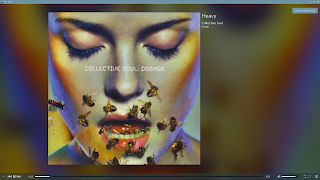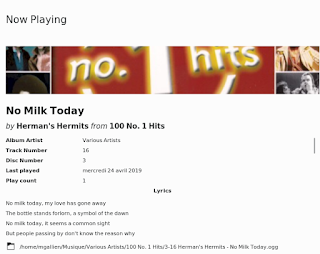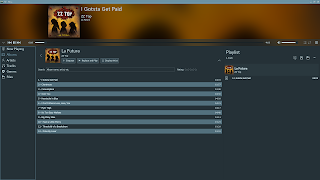It seems we're talking about the Elisa music player a lot these days, and this is no doubt due to the fact that the application is seeing some steady development lately. This includes some contributions from new developers as well, which is always nice to see.
 |
| One of the nice features of Elisa is using the color palette of the cover art to create a blurred background, shown here in full-screen mode. |
What's new in Elisa music player?
The main developer recently blogged an update announcing some more new features in Elisa. One of them is adding a playlist undo feature, thereby preventing a hand-curated playlist in the player from accidentally being deleted.
New music browsing views:
"It is now possible to browse the most recently played tracks or the most frequently played ones.More views are on the way as well, once tools are added for the user to be able to better define their criteria.
The idea is to show the 50 last played tracks or the 50 most frequently played tracks."
A new context view
A new view is available to show some relevant metadata, such as play count, lyrics, composer, etc.
 |
| Elisa's new context view |
Also included in the upcoming release are better optimizations and a lower memory footprint.
Looking further down the road
These new features will make it into the next release. Looking onward, as we like to do in Linux-fanboi-land, we can see some additional exciting things potentially coming down the pipeline for Elisa. These (may) include:
- Mycroft AI integration
- Chomecast support
- Many UI improvements
- KFileMetadata support
- Online radios
- High DPI support
- DNLA support
- Moving to KDE's Kirigami framework
 |
| Elisa in album-view mode, where tracks can then be dragged to the current playlist |
One little niggle I have with Elisa is, at present, cover art support is limited to having a cover image in the album's folder - i.e. having a cover.jpg file on hand, while not supporting embedded cover art. I haven't been able to confirm if this will be changing soon.
One workaround would be to use a tagger, such as Picard, and have it automatically generate the cover art file for you. This is still a bit tedious however, as each album would need to be re-tagged if the separate cover art file is missing. Not a big deal in the grand scheme of things, but it is worth noting for now.
You can read more about Elisa's development from the lead dev's blog post here.



No comments:
Post a Comment